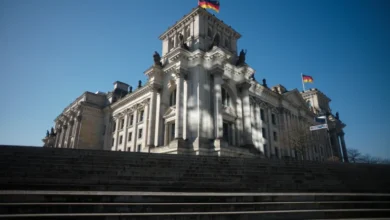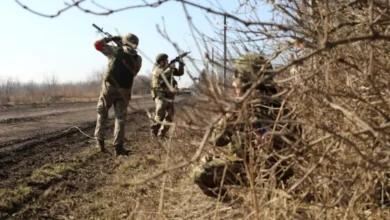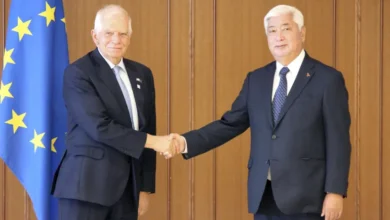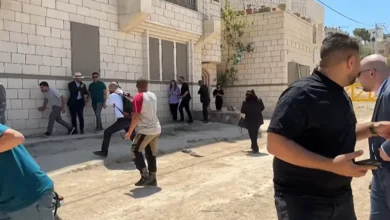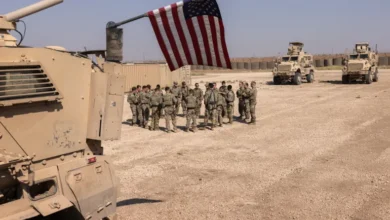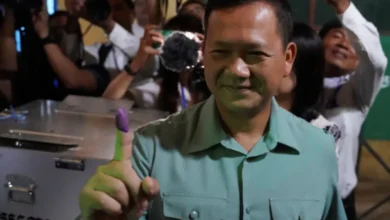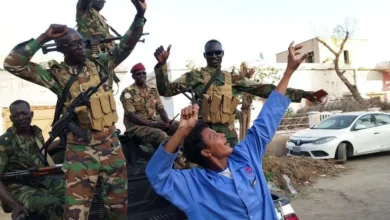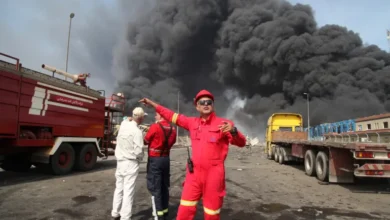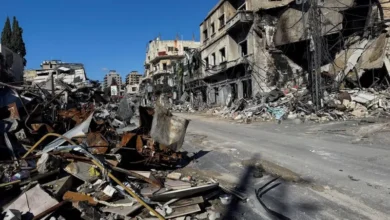Ukraine ramps up operations as dam destruction blame game unfolds
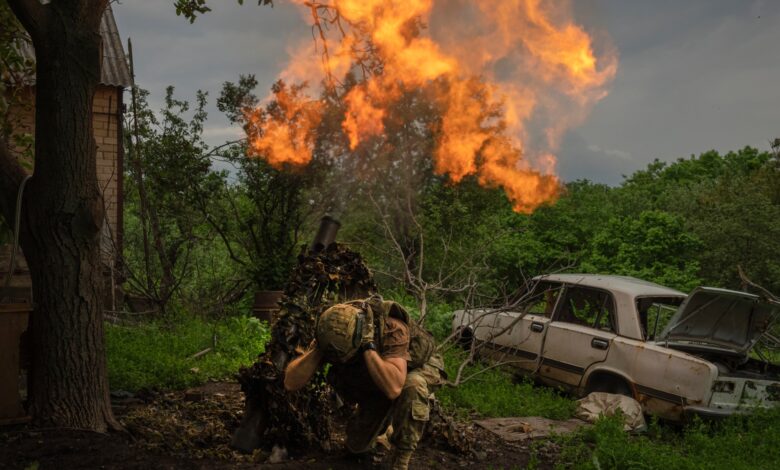
A surge in Ukrainian military operations, a flurry of cross-border raids by drones and armed groups and a mystery over who blew up a dam that flooded swathes of land along the Dnipro River.
Events are moving fast in Russia’s war on Ukraine, now in its 67th week.The commander of Ukraine’s ground forces, Oleksandr Syrskyi, said his soldiers were advancing in Bakhmut on Monday after a lull of a few days.
“The Bakhmut direction remains the epicentre of hostilities. There we are moving along a fairly wide front,” Ukrainian Deputy Defence Minister Hanna Maliar confirmed on Telegram.
Maliar said Ukrainian troops advanced as much as 1,600 metres (5,250 feet) north of Bakhmut and as much as 700 metres (2,300 feet) to the south in a flanking manoeuvre.
Russia claimed victory in Bakhmut on May 21, and nine days later, Ukraine admitted the city was in Russian hands after 10 months of bloody warfare.
The Russian defence ministry said Ukrainian forces on Sunday launched a “large-scale offensive” across five sectors of the eastern front. Defence Minister Sergei Shoigu said Russian forces repelled all the attacks and killed 3,175 Ukrainian soldiers in three days.
“Russian sources have previously attempted to paint Ukrainian counteroffensive actions as immediate failures and Russian sources are likely attempting to do the same with what they view as the start of the announced Ukrainian counteroffensive,” said the Washington-based Institute for the Study of War, a think tank.Ukraine did not announce its counterattack had begun, but Maliar posted a video on her Telegram channel on Sunday showing Ukrainian soldiers holding their fingers to their lips. Her caption read, “Plans love silence. There will be no announcement of the start.”
On Friday, The Washington Post reported Ukrainian armed forces were carving out corridors through their own minefields in the southern region of Zaporizhzhia to enable units to go on the offensive.
And in an interview with The Wall Street Journal, Ukrainian President Volodymyr Zelenskyy said “we are ready” for the counteroffensive.“We firmly believe that we will succeed. I don’t know how long this will take. To be honest, it could go in different ways, completely different. But we are going to do this,” Zelenskyy said.
Asked what the counterattack would look like, US special forces commander Colonel Seth Krummrich told Al Jazeera, “I think you’ll get a spoiling attack or a distraction attack. And then you’ll get one or two major punches.
“But I think we have to be careful not to oversell the counteroffensive. It is only 12 battalions. There’s only so much you can do with that. I think we’re going to see small to midsize gains.”
Nine of Ukraine’s 12 mechanised battalions have been trained by NATO militaries and are expected to form the spearhead of the counterstrike.The Russian Volunteer Corps, an anti-Putin Russian paramilitary group operating from Ukraine, said the “second phase” of its operations began on June 1. It posted footage apparently showing its fighters on the outskirts of Shebekino, a Russian town 6km (2.8 miles) from the Ukrainian border.
It also claimed responsibility for a raid in Russia’s Belgorod region on May 24.
The Freedom of Russia Legion published geolocated footage showing its soldiers striking Russian positions near Novaya Tavolzhanka, a settlement 3.5km (1.7 miles) from the Ukrainian border, also on June 1.
Russia’s defence ministry claimed to have thwarted an “invasion”.
Yevgeny Prigozhin, who heads Russia’s Wagner mercenary group and is famously critical of the Russian defence establishment, threatened his forces would “go to Belgorod” without permission if the military command did not “liberate” the region’s border areas from pro-Ukrainian groups.
